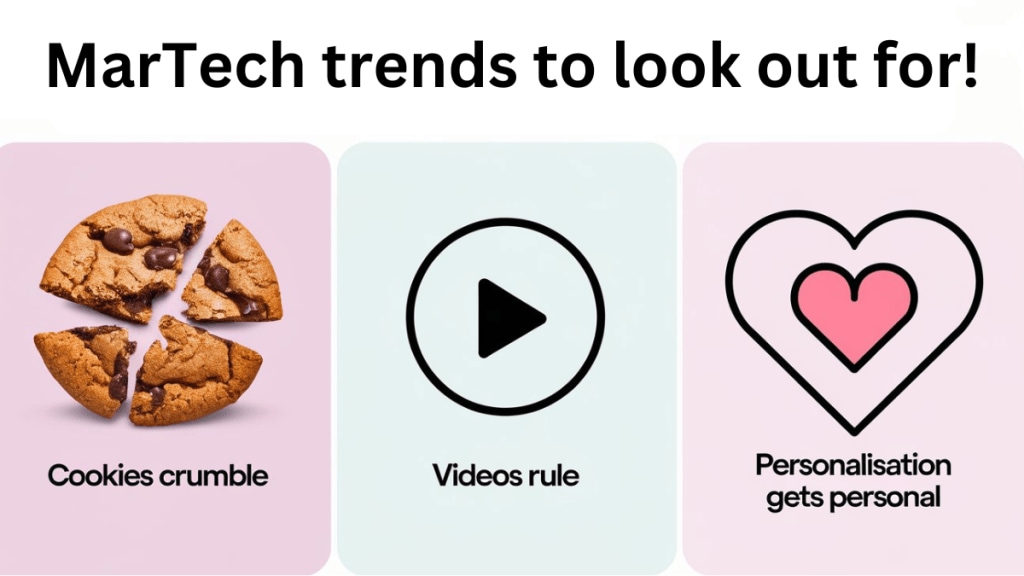MarTech trends are, reportedly, evolving faster than TikTok trends and with the rollercoaster of a ride that 2024 has been, this is merely a promise for something bigger and better to come. With brands fighting for consumer attention in an increasingly crowded digital space, keeping up with MarTech trends is vital.
‘Hey (name)!’ isn’t enough anymore
With the latest technologies being implemented every day, seeing your name in the subject of an email is not enough personalisation anymore. The consumer demands more. In 2024, hyper-personalisation is the name of the game. “We’re noticing that consumers increasingly prefer personalised, value-driven ads. There is a shift toward ad experiences that provide genuine insights or solutions rather than mere promotion,” Deep Bajaj, co-founder, Sirona, told BrandWagon Online. Furthermore, personalisation can reduce customer acquisition costs by up to 50% and lift revenues by five to 15%, according to a report by McKinsey. But there’s a catch – 80% of marketers will abandon their personalisation efforts by 2025 due to data challenges or low RoI (return on investment), reveals Gartner.
“By leveraging advanced technologies like Amazon Marketing Cloud, we can segment audiences based on individual preferences, browsing patterns, and purchase behaviours. This allows brands to craft personalised ad experiences that resonate with consumers on a deeper level,” Meher Patel, founder, Hector AI, said. The key to making it work? Balance. Too much personalisation and you might come off as creepy. Just enough, and you’re striking gold.
More than just dance challenges
It is believed that video is still the king. In 2024, video content is no longer just about high production values or flashy animations. Interactive and shoppable videos are becoming the new norm. “Instead of simply broadcasting a message to the audience, interactive ads are designed to engage consumers in some way – they involve a two-way interaction between the ad and the consumer. This could lead to increased time spent with the ad, more consistent brand and message recall, and, therefore, a higher chance of conversion,” Raviteja Dodda, founder, MoEngage, commented.
86% of video marketers say video has increased traffic to their website while 78% of video marketers say video has directly helped increase sales, reveals a study by Wyzowl. Moreover, experts opine that the trajectory of video ads will be inclined towards inculcating newer interactive features that allow users to explore the products without leaving the platform. With more brands launching video-first strategies, this isn’t just a trend; it is claimed to be a tidal wave.
Do we want the cookies?
The cookie jar has been called out and sent back so often that it’s in a hideout now. With Google’s cookie-out cookie-in situation, it is safer to say that brands should not rely on them to track user behaviour and target ads will need to embrace new strategies. “Third-party cookies solve the cold-start problem via retargeting. However, consumers today don’t appreciate a brand knowing something that they haven’t explicitly shared. They see it as an invasion of privacy even if the technology allows it. In that respect, the first-party strategy is far more effective,” Raahul Seshadri, director- engineering, WebEngage, added. Additionally, 41.3% of websites deploy cookies, according to a report by W3Tech. Contextual advertising, which targets consumers based on the content they’re viewing, and zero-party data, which comes directly from consumers, will be vital. “Contextual advertising focuses on content rather than user data and offers a compliant and effective alternative. By aligning ads with relevant content, it improves ad relevance, enhances brand safety, and delivers a better user experience,” Amit Relan, co-founder and CEO, mFilterIt, wrote in their column.
Smarter, not flashier
While AI might be the buzzword of the decade, in 2024, it is taking on a quieter, faster and more practical role. From what is understood, marketers are using AI for better customer segmentation, predictive analytics and automating tedious tasks. However, it is not the flashy robots that come to your mind thanks to Hollywood, AI now is your invisible assistant working behind the scenes to refine strategy. 68% of marketers say their use of AI has improved their overall marketing performance, according to Salesforce. “By embracing these technologies with ethical foresight, brands can build deeper connections with consumers, offering experiences that are as personalized as a tailor-made suit, as interactive as a magic mirror, and as insightful as a crystal ball,” Pragya Sugandha, associate director – market development, Generative AI business services and analytics COE, Happiest Minds Technologies, wrote in their column.
As we head into 2024, it is no assumption that MarTech will continue to evolve, and that the brands that embrace these trends will stand out. One thing is clear – marketers need to be on their toes all the time to stay ahead of the curve, those who don’t might find themselves getting lost in the shuffle, outpaced by competitors who have cracked the code.
